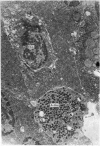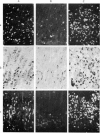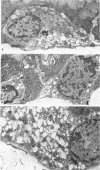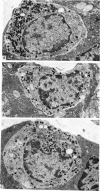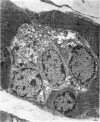Abstract
1. The argyrophil (enterochromaffin-like) cells in the oxyntic gland area of the rat stomach contain histamine, which can be demonstrated fluorescence microscopically after exposure to gaseous OPT. After administration of L-dopa (or L-5-hydroxytryptophan), these cells produce and temporarily store dopamine (or 5-hydroxytryptamine), demonstrable by its characteristic formaldehyde-induced fluorescence. Ultrastructurally, the enterochromaffin-like cells, which have the appearance of polypeptide hormone-secreting cells, comprise two main cell types, the most predominant one having vesicular type granules (EGL cells), the second most predominant one having smaller, uniformly electron dense granules (A-like cells). 2. Rats were subjected to the following surgical treatments: antrectomy; porta-caval shunting; antrectomy+porta-caval shunting; or sham-operation. Three to eight weeks after surgery the histamine-storing cells (enterochromaffin-like cells) of the oxyntic mucosa were analysed by fluorescence histochemistry, light and (quantitative) electron microscopy, and fluorometric determination of amines. 3. After antrectomy, fluorescence histochemistry and silver staining revealed a reduced number of enterochromaffin-like cells. The histamine content in the oxyntic mucosa was reduced by about 50%. As in unoperated injection of pentagastrin seemed to mobilize histamine. Feeding or injection of insulin failed to do so in antrectomized as opposed to control rats. Ultrastructurally, the cytoplasmic granules of both endocrine-like cell types were less numerous than in the unoperated rats. The reduction in cell number and granularity was particularly conspicuous with regard to the EGL cells. 4. After porta-caval shunting the number of enterochromaffin-like cells increased markedly. Chemical determination revealed a twofold increase in the histamine concentration of the oxyntic mucosa. Feeding or injection of insulin or pentagastrin lowered the histamine concentration. As judged by electron microscopy, the proliferation of endocrine-like cells induced by porta-caval shunting was restricted to the ECL cell type. Besides occurring in greater number, these cells were larger than those in unoperated controls, and their cytoplasm was densely packed with granules that were increased in size. 5. Following antrectomy of the porta-caval shunted rats the number of enterochromaffin-like cells and the oxyntic histamine concentration was reduced. 6. The results support the idea that gastrin exerts trophic as well as excitatory effects on oxyntic endocrine-like cells.
Full text
PDF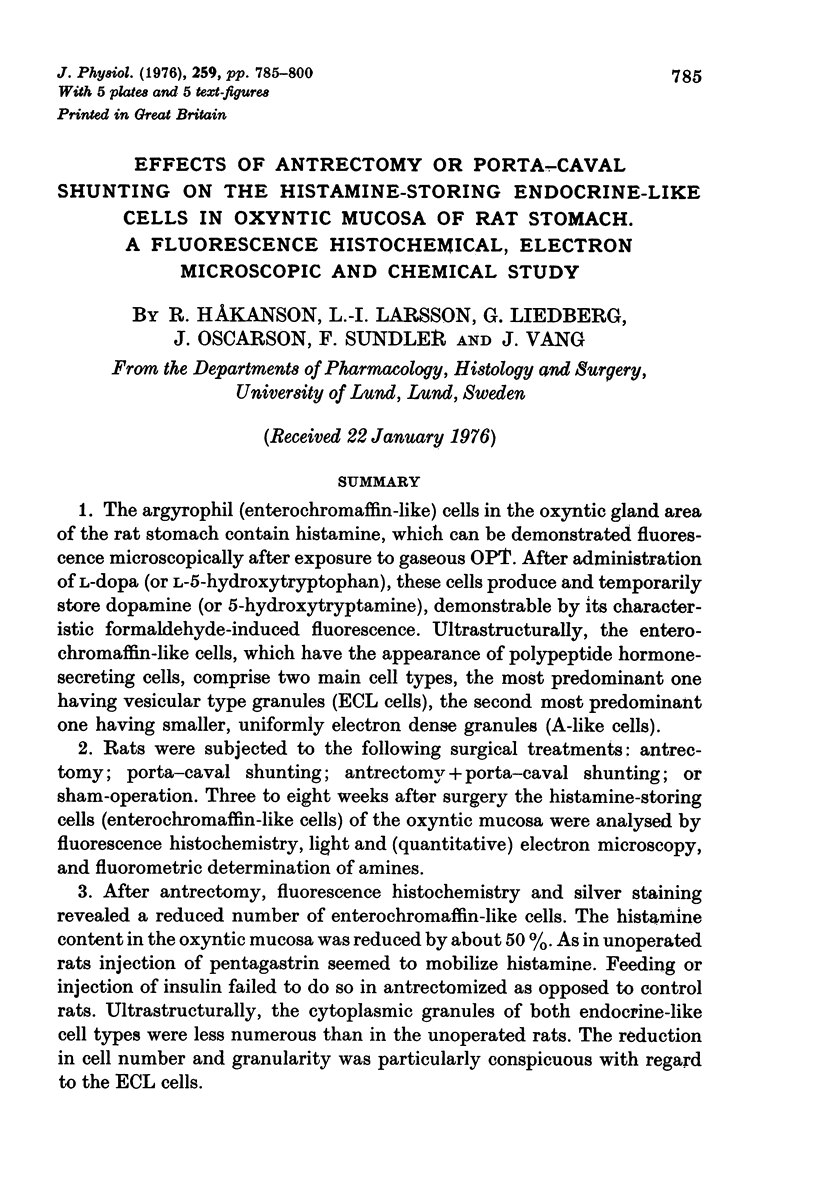
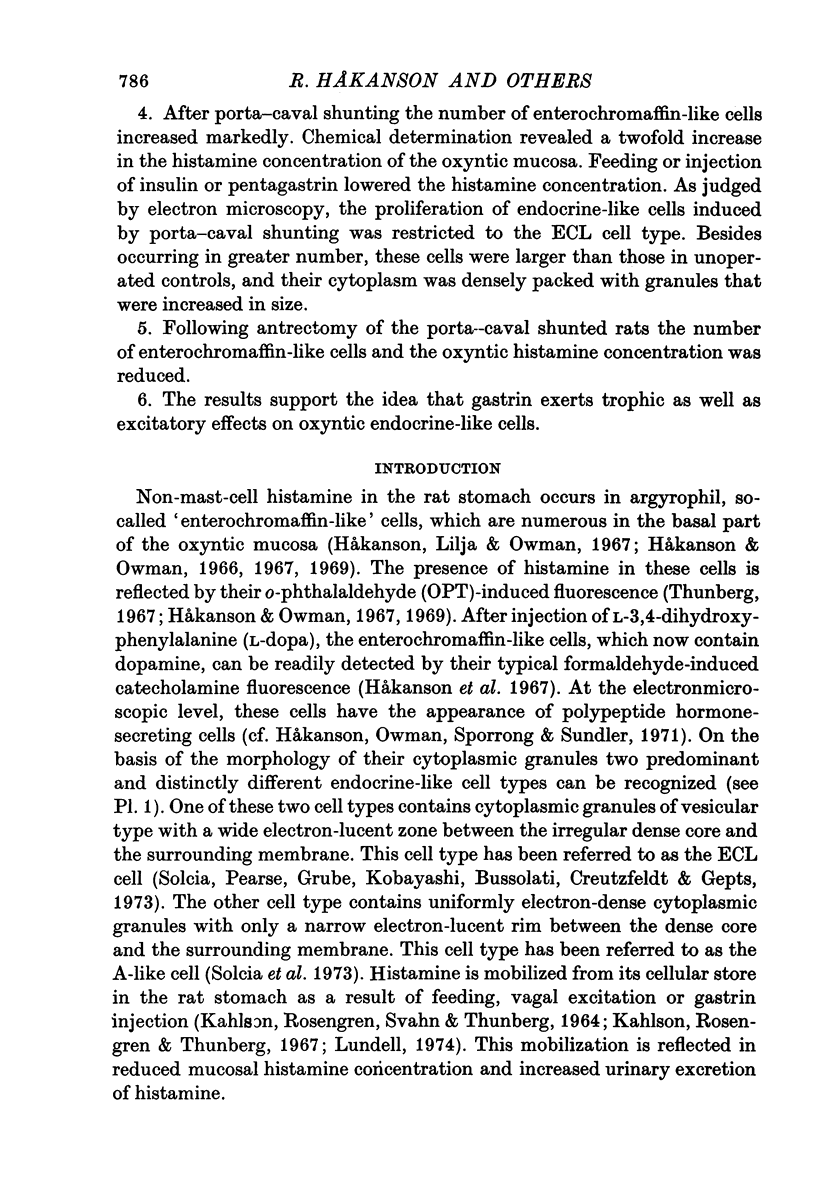
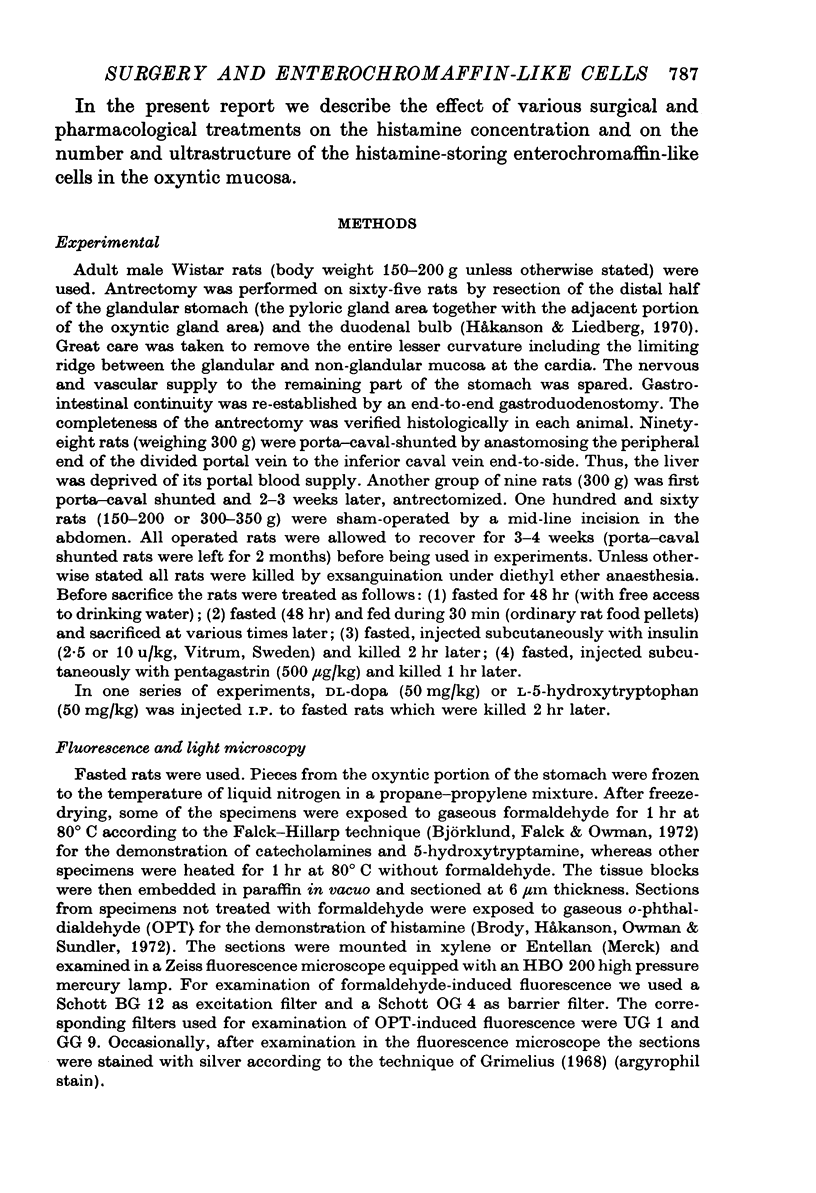
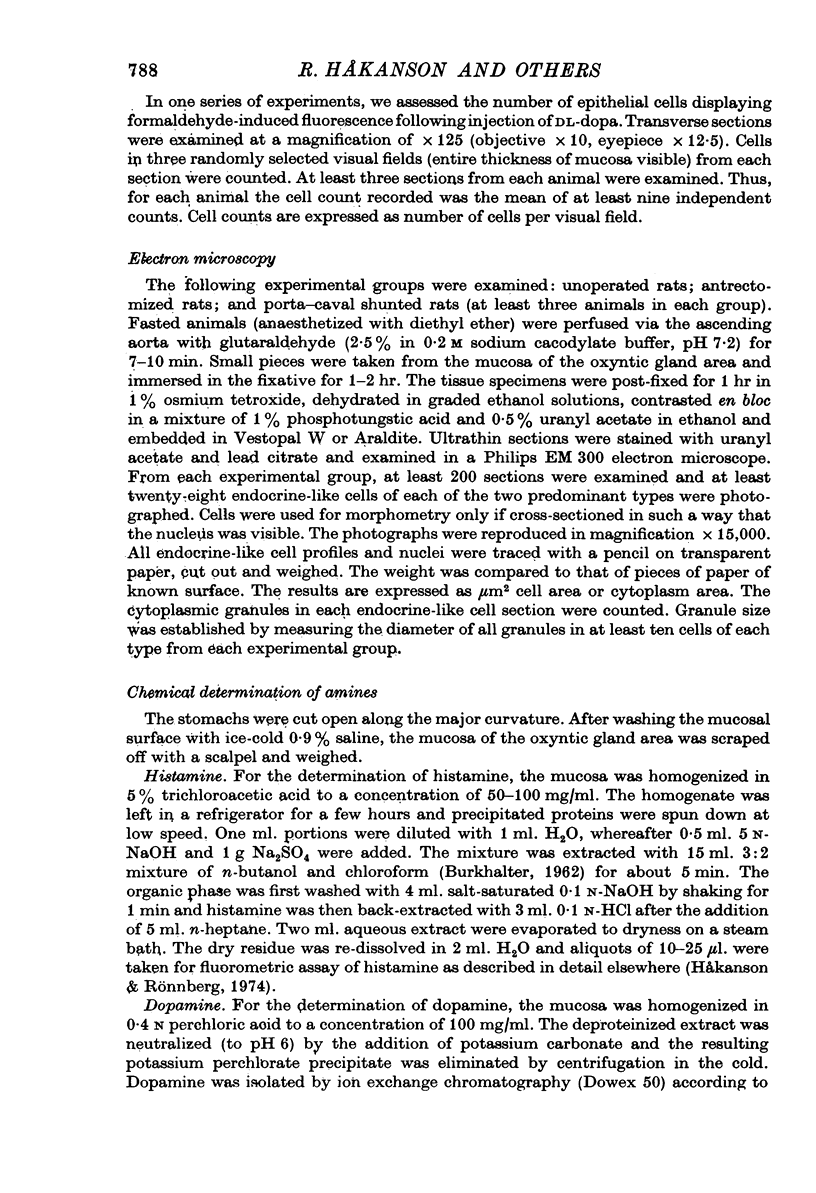
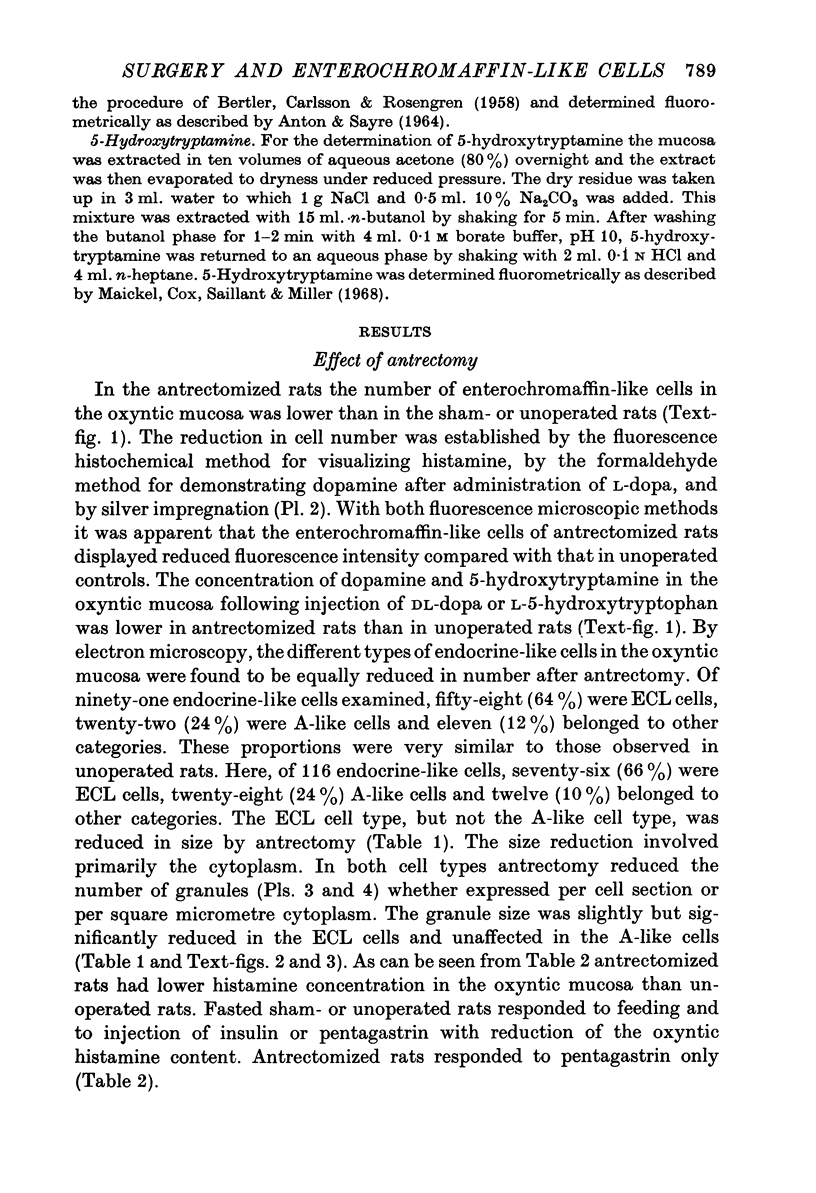
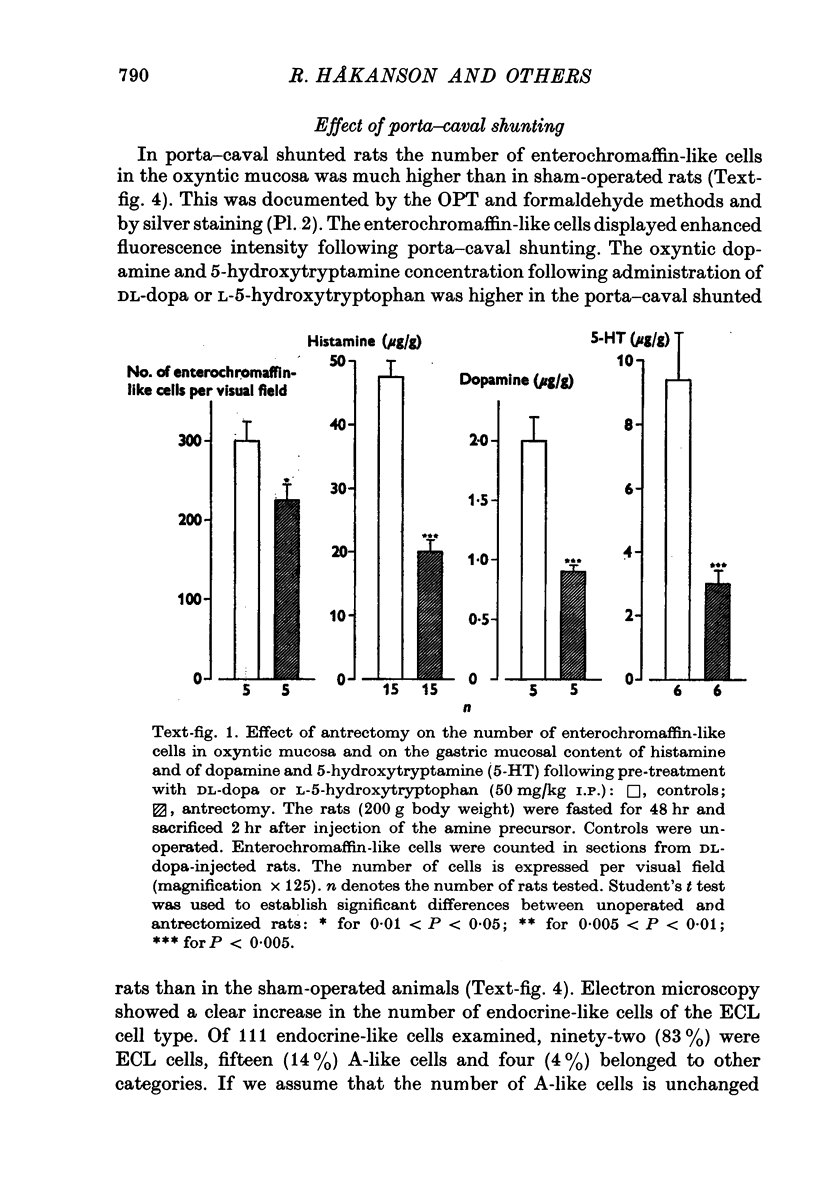
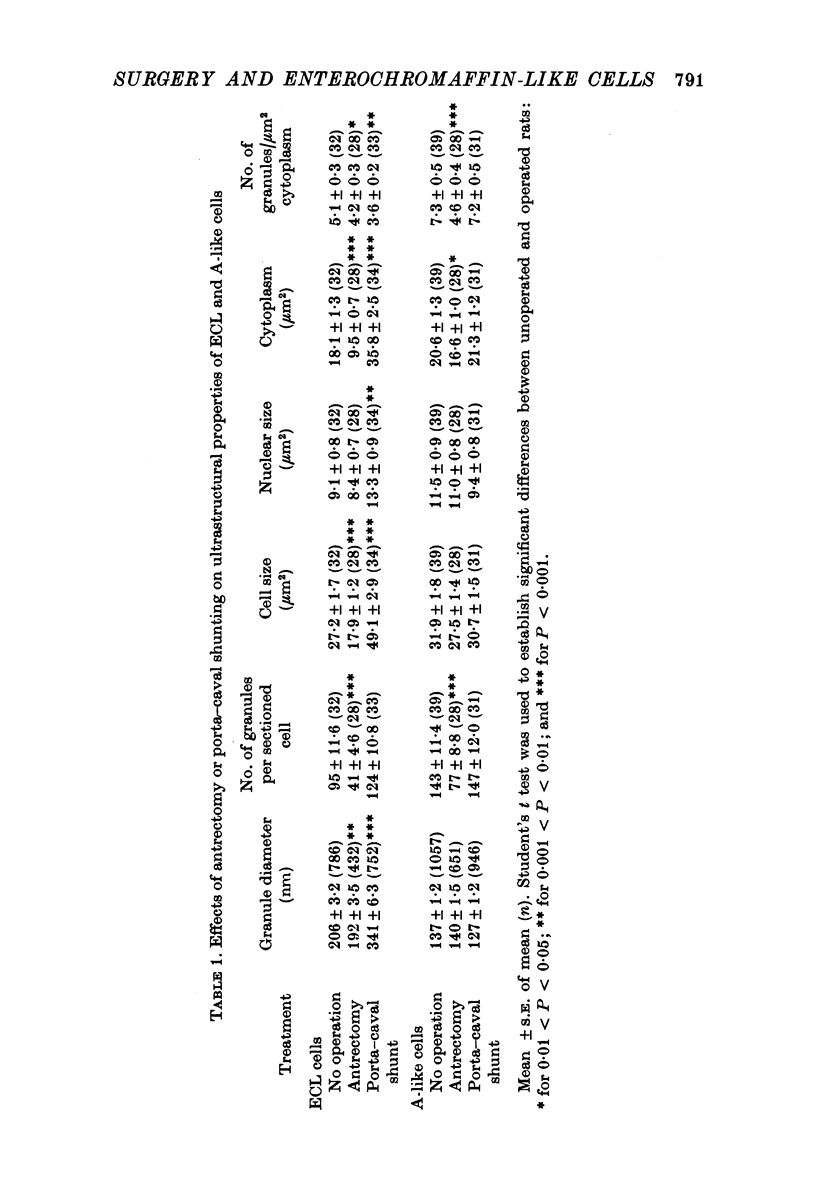
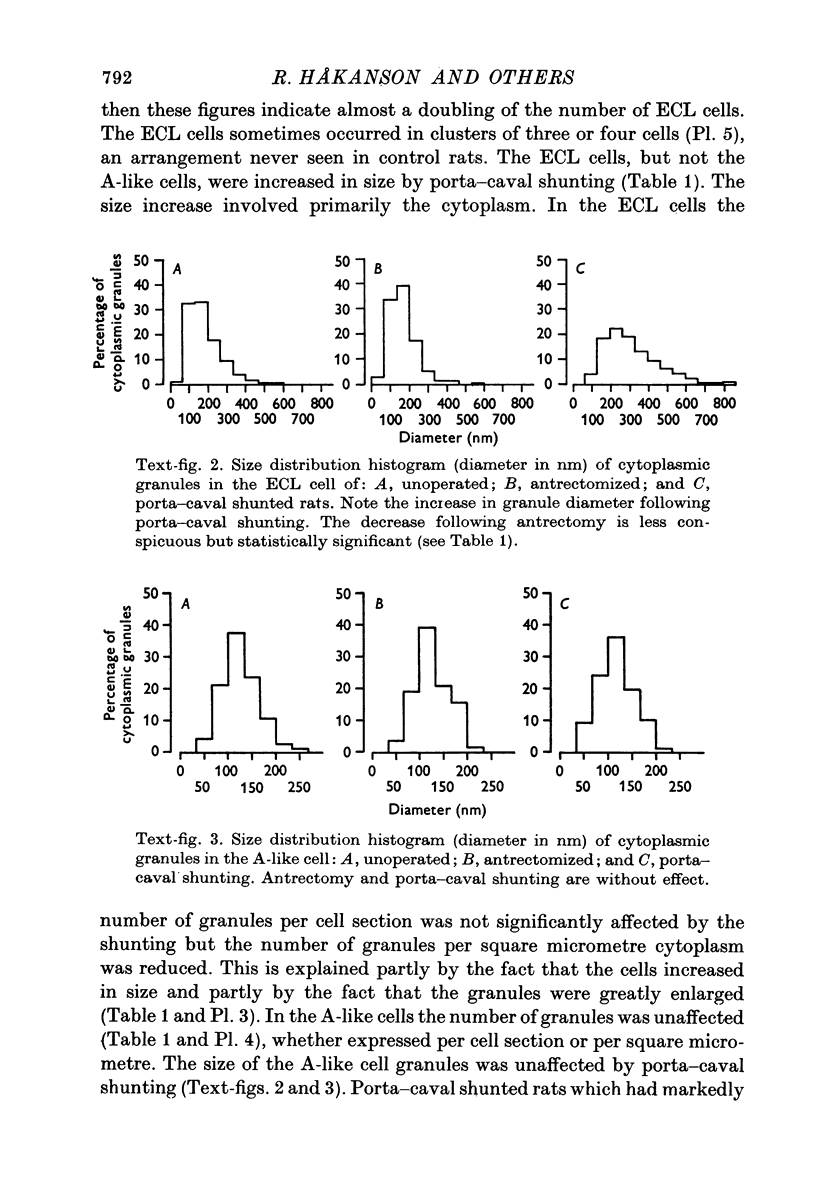
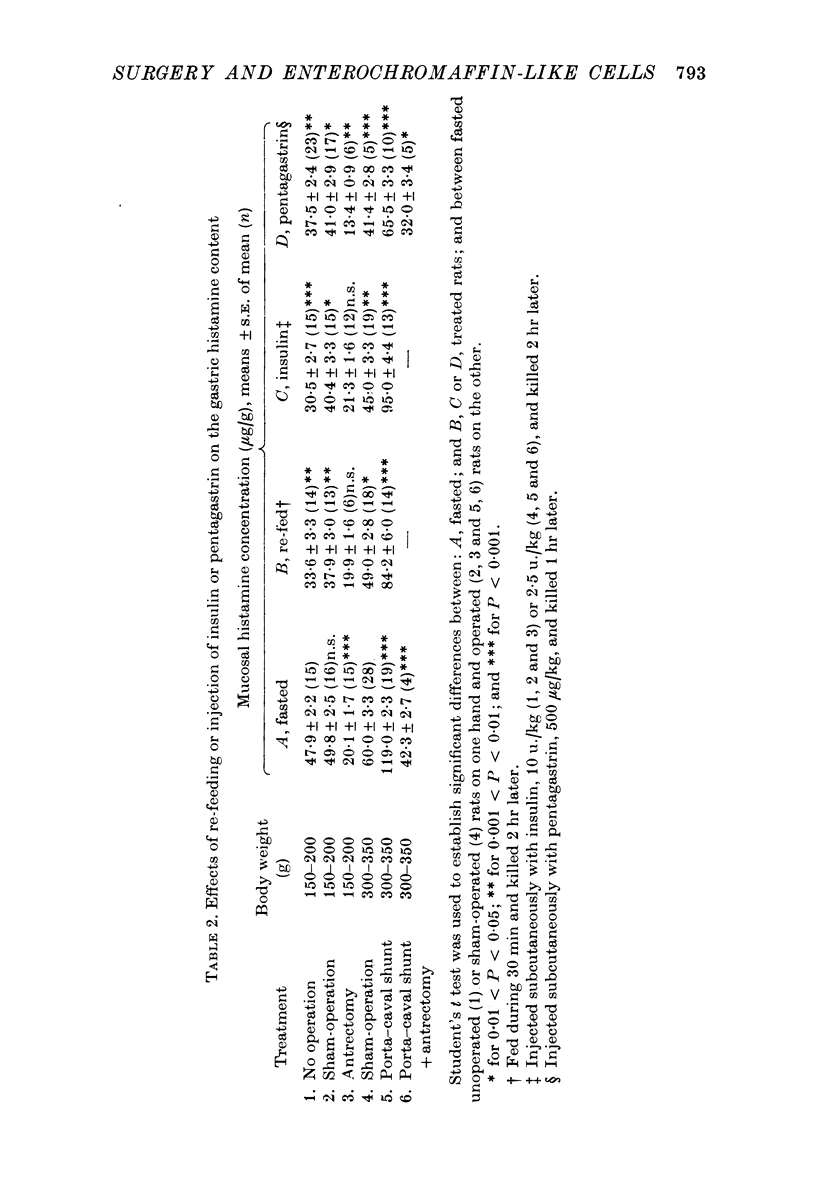
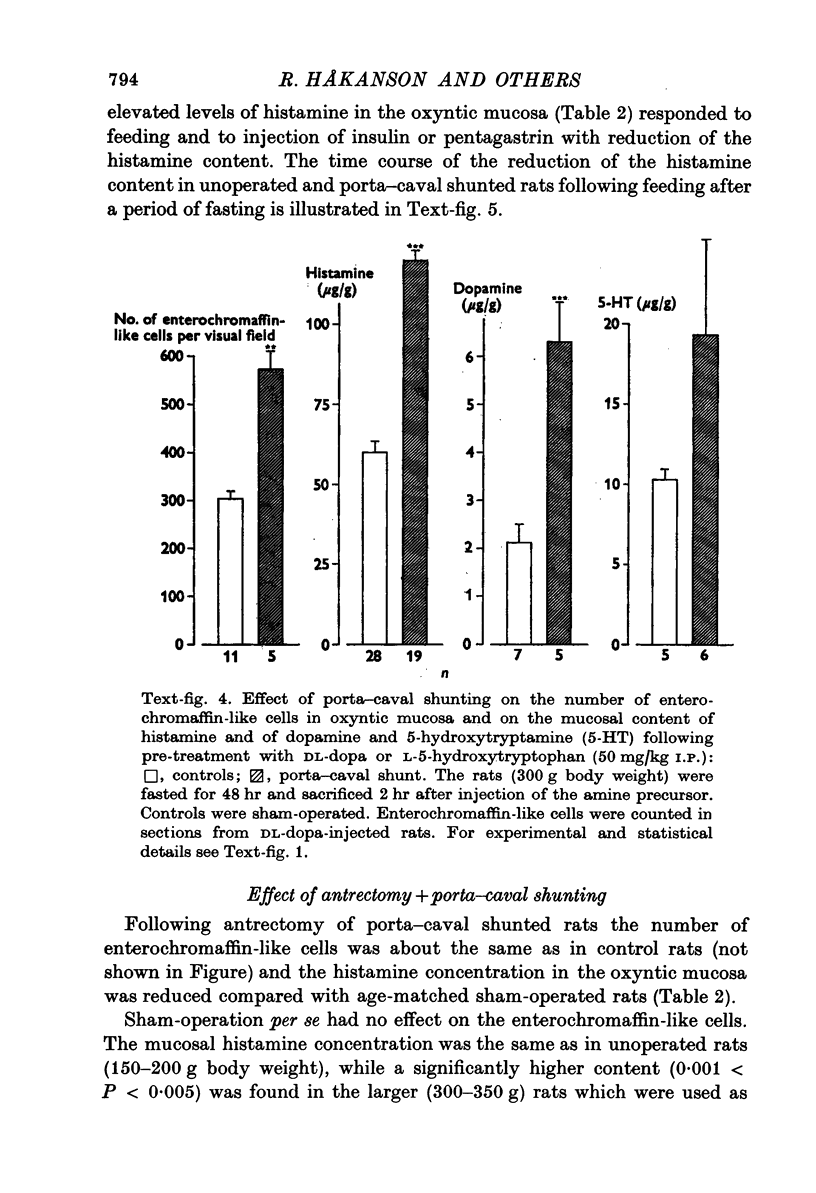
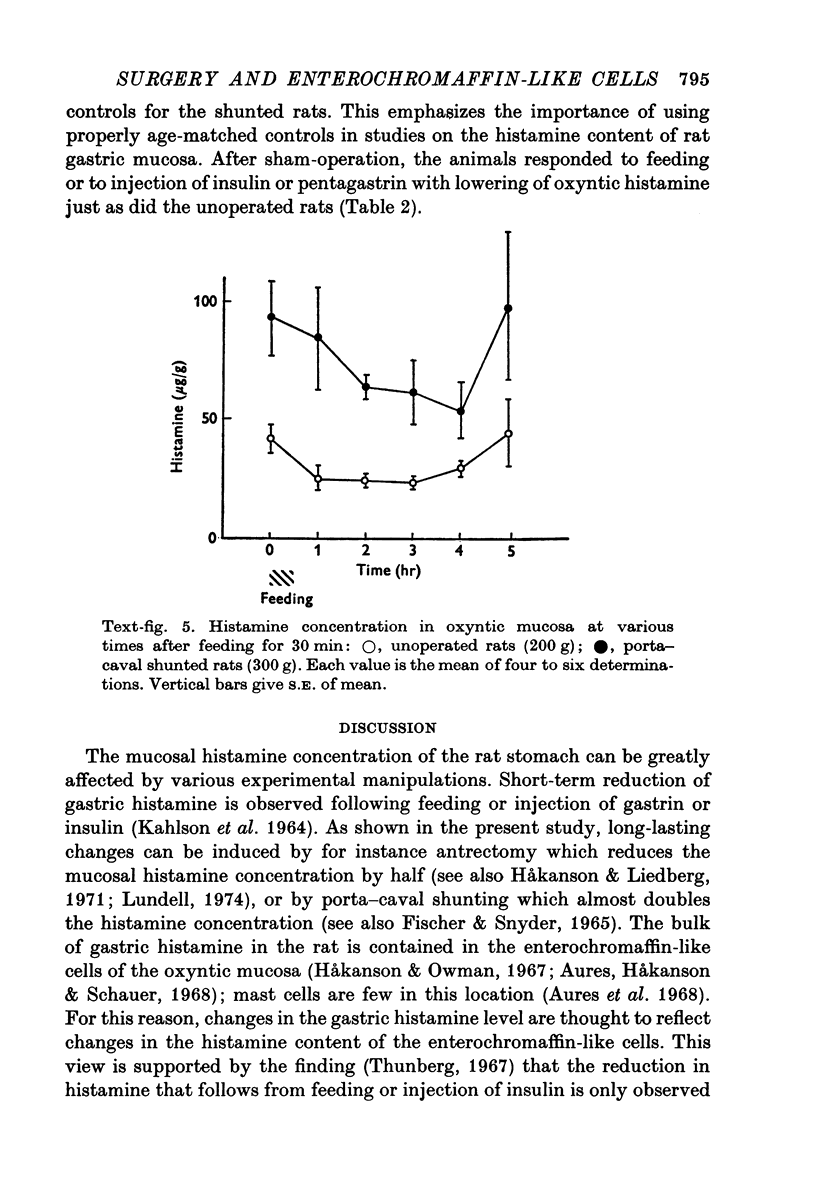
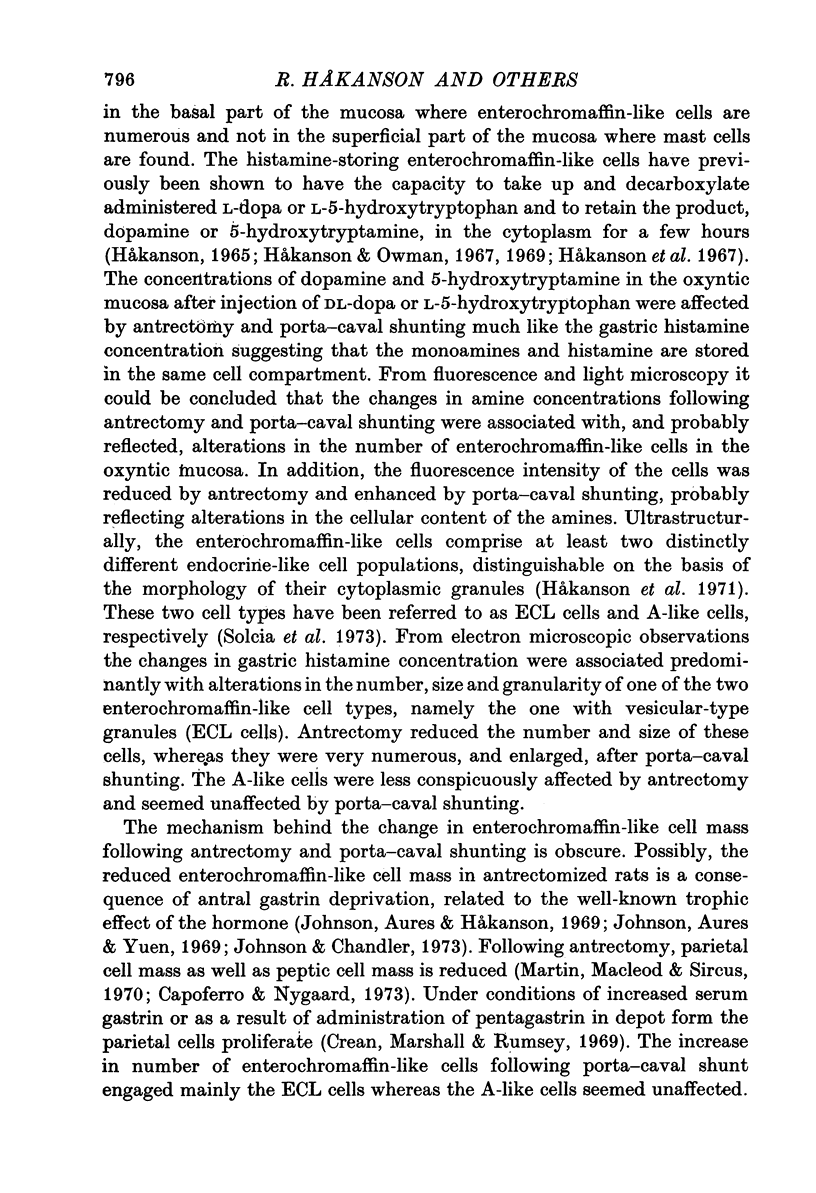
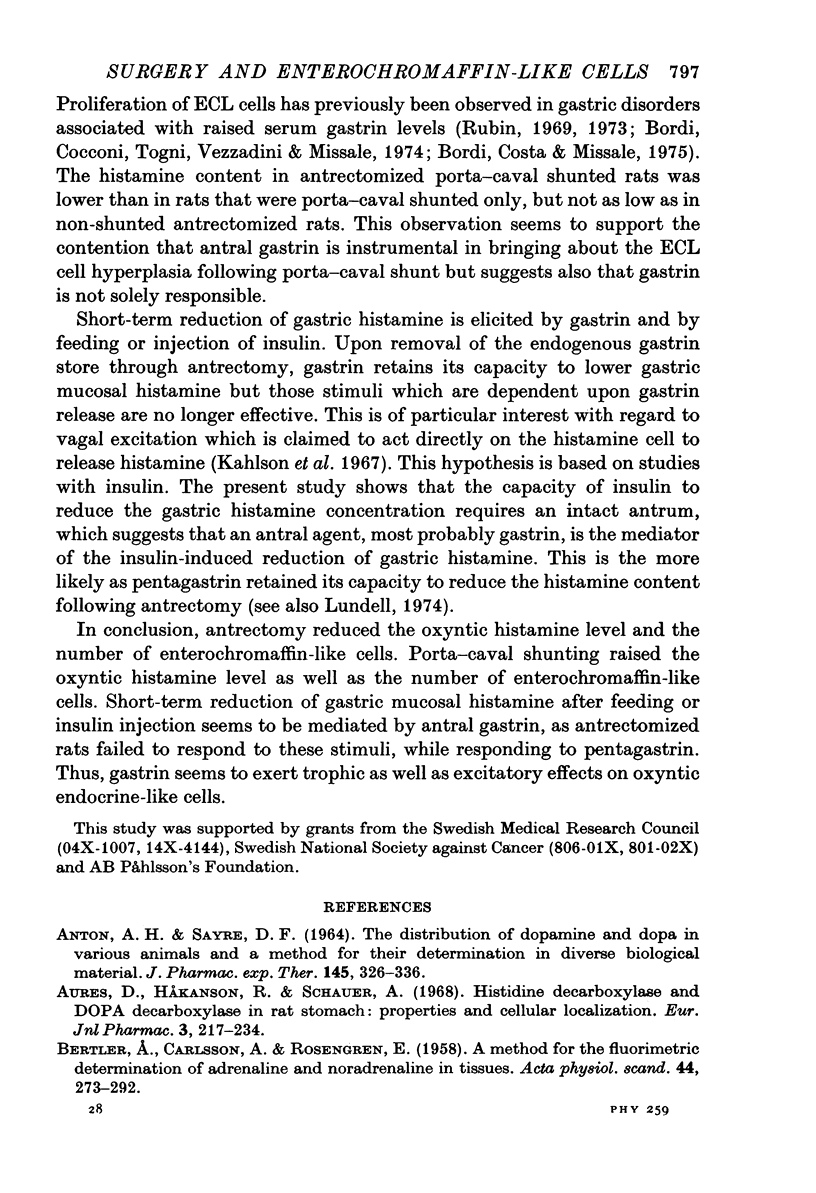
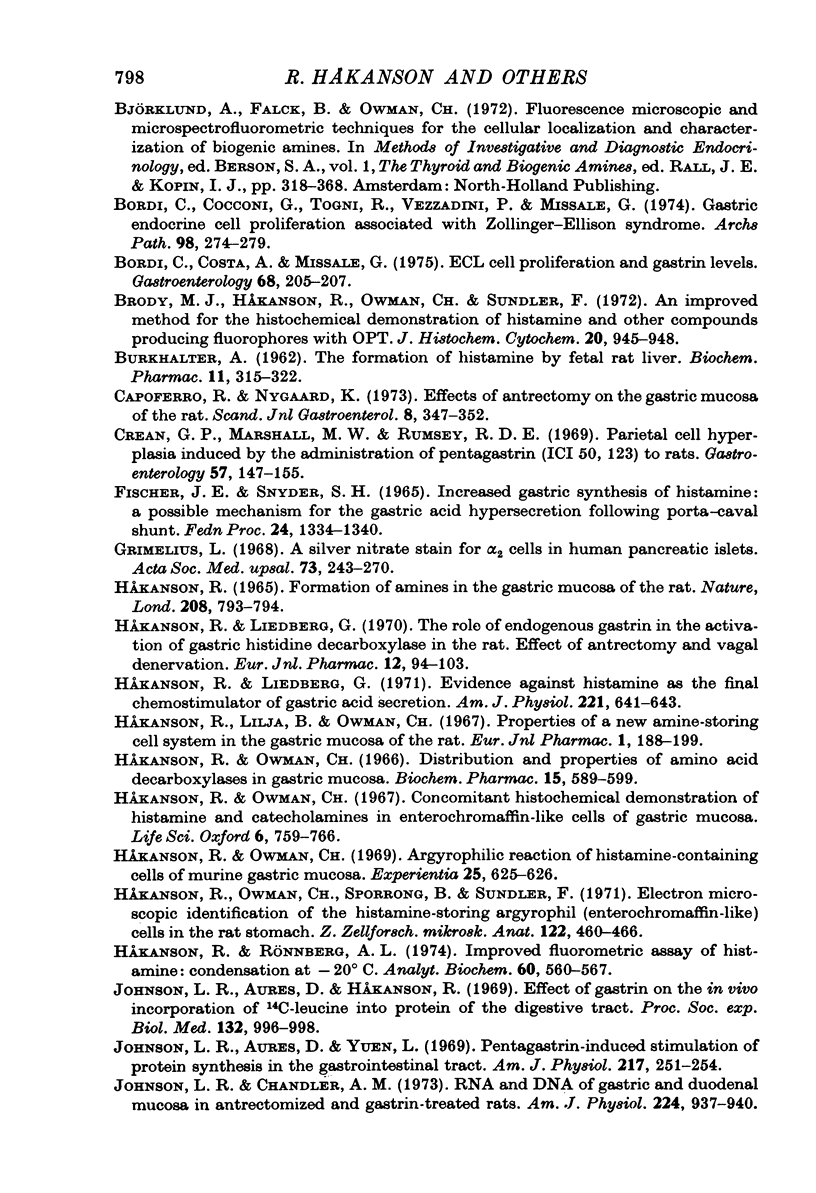
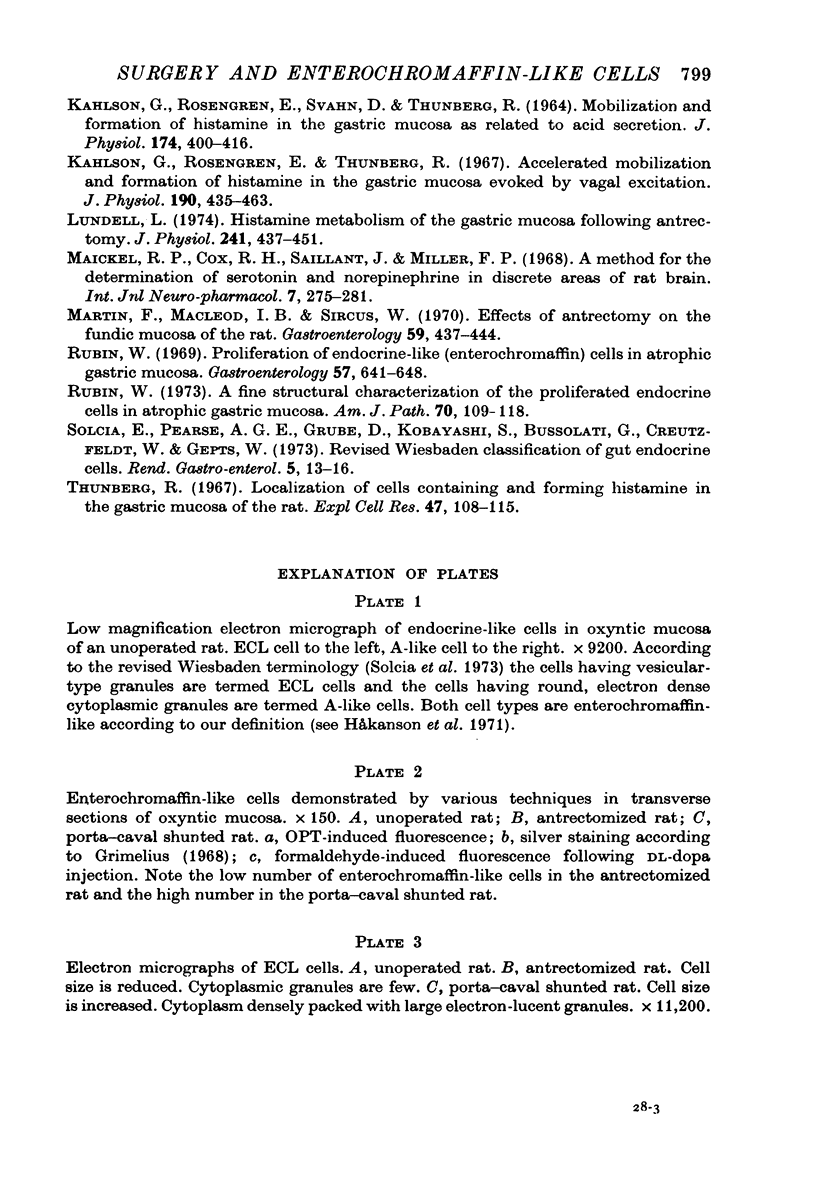
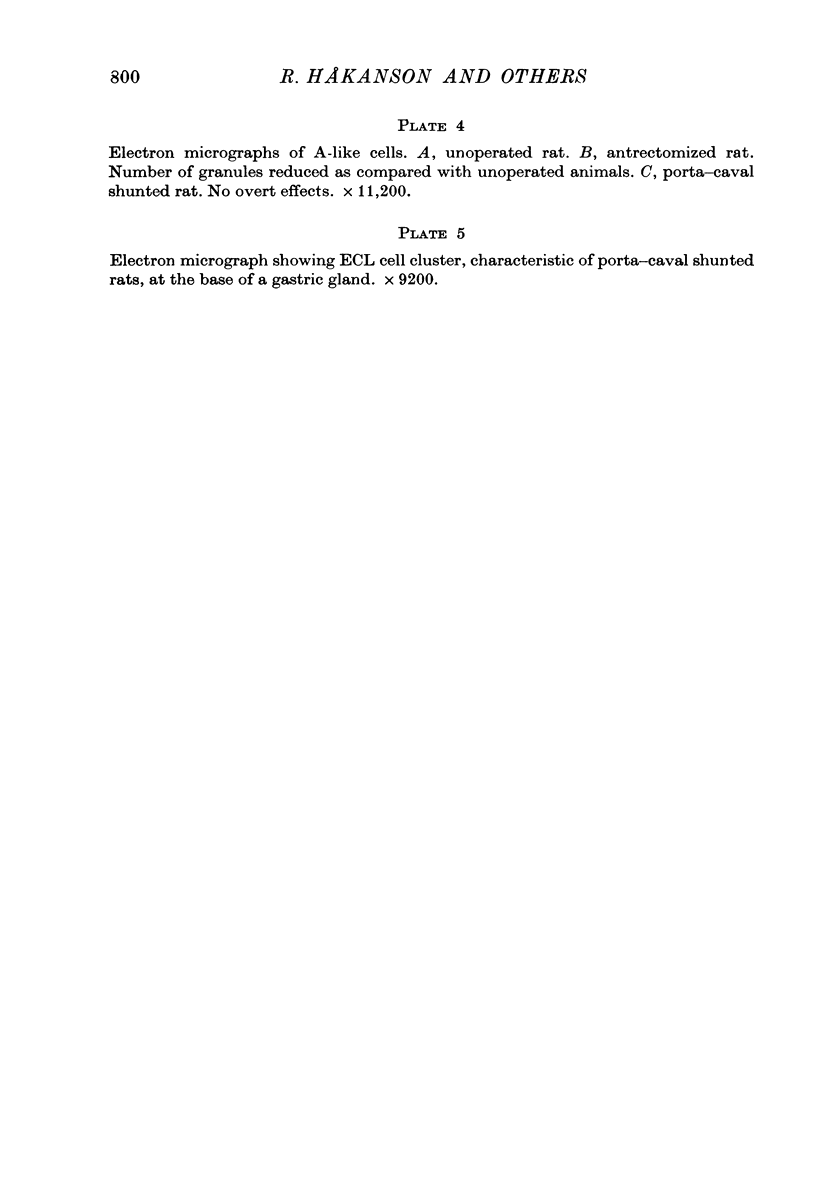
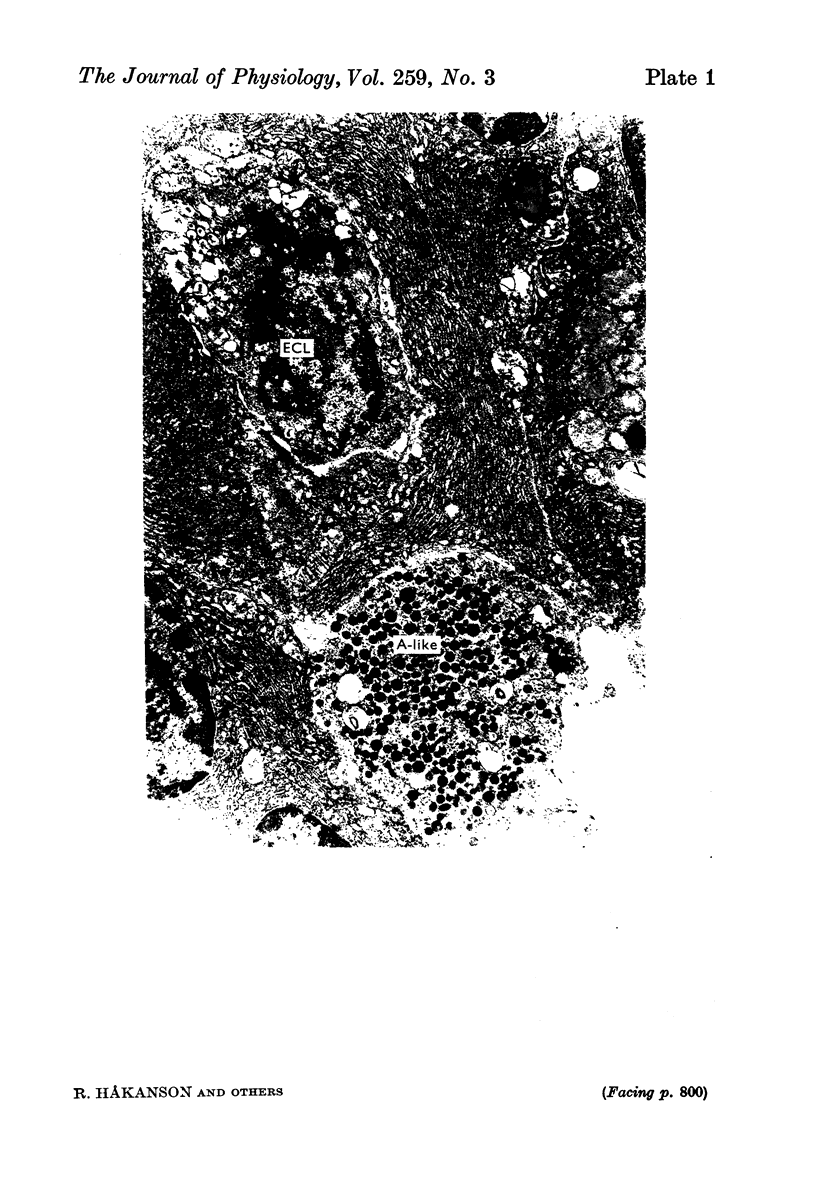
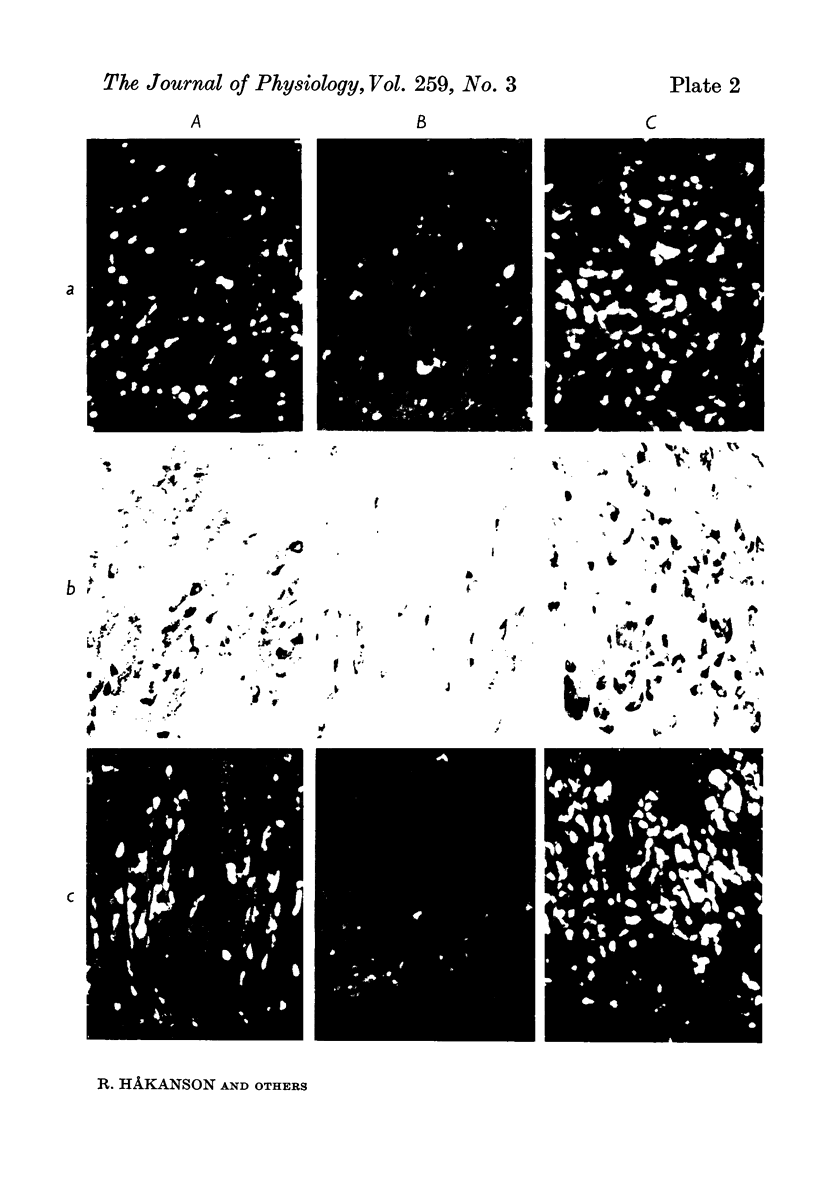
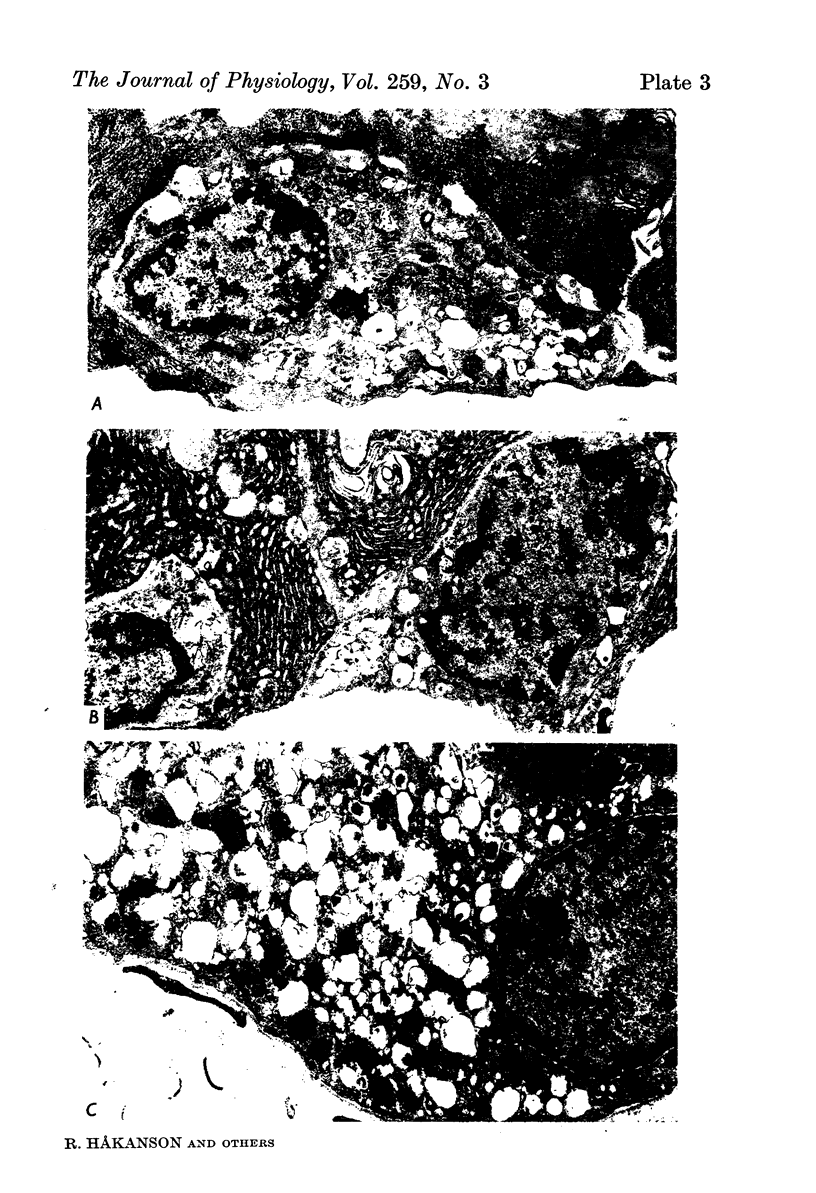
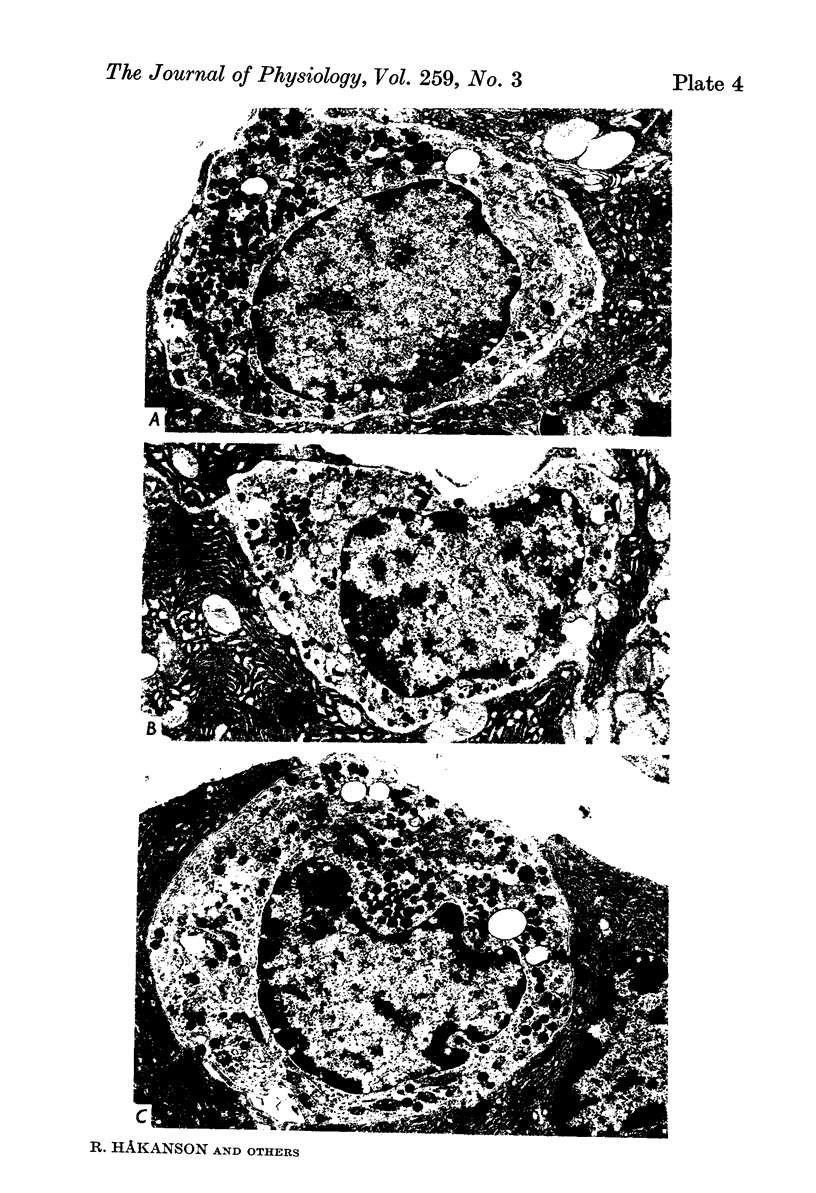
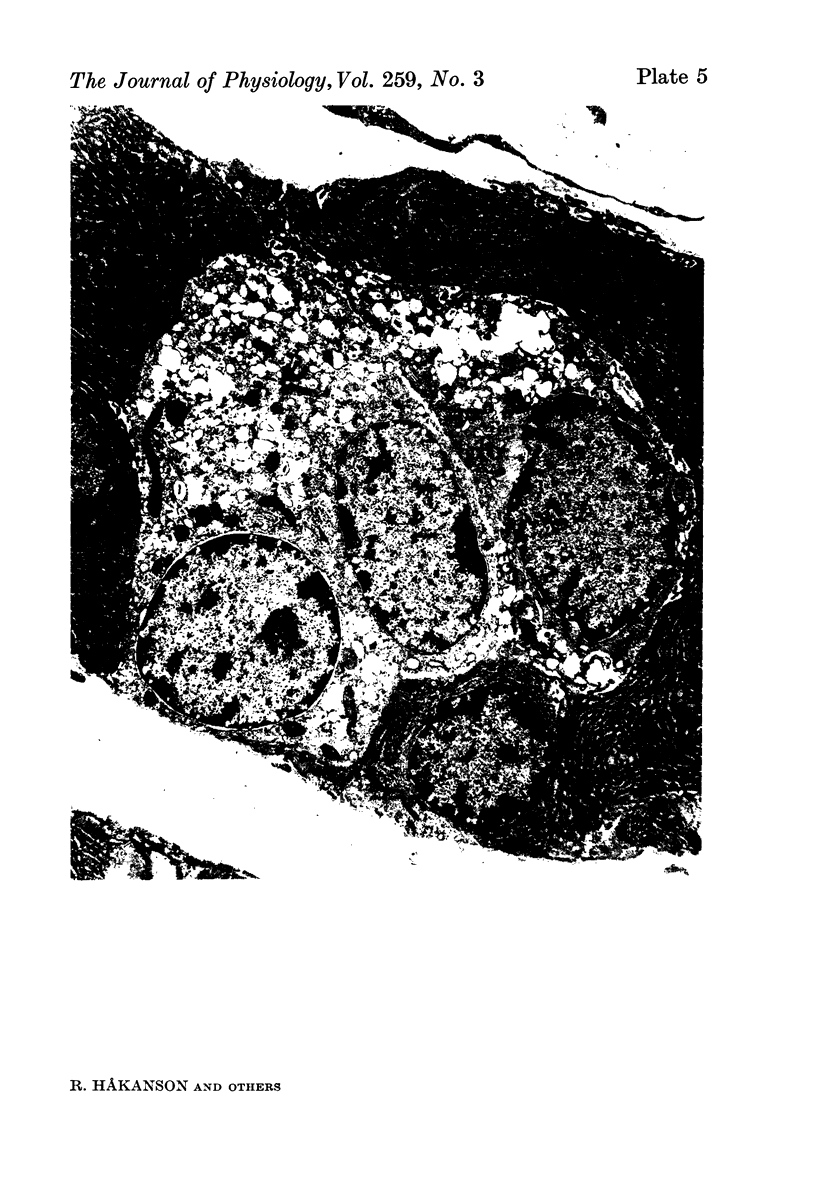
Images in this article
Selected References
These references are in PubMed. This may not be the complete list of references from this article.
- ANTON A. H., SAYRE D. F. THE DISTRIBUTION OF DOPAMINE AND DOPA IN VARIOUS ANIMALS AND A METHOD FOR THEIR DETERMINATION IN DIVERSE BIOLOGICAL MATERIAL. J Pharmacol Exp Ther. 1964 Sep;145:326–336. [PubMed] [Google Scholar]
- Aures D., Håkanson R., Schauer A. Histidine decarboxylase and DOPA decarboxylase in the rat stomach. Properties and cellular localization. Eur J Pharmacol. 1968 Jun;3(3):217–234. doi: 10.1016/0014-2999(68)90135-0. [DOI] [PubMed] [Google Scholar]
- BERTLER A., CARLSSON A., ROSENGREN E. A method for the fluorimetric determination of adrenaline and noradrenaline in tissues. Acta Physiol Scand. 1958 Dec 15;44(3-4):273–292. doi: 10.1111/j.1748-1716.1958.tb01627.x. [DOI] [PubMed] [Google Scholar]
- BURKHALTER A. The formation of histamine by fetal rat liver. Biochem Pharmacol. 1962 Apr-May;11:315–322. doi: 10.1016/0006-2952(62)90054-0. [DOI] [PubMed] [Google Scholar]
- Bordi C., Cocconi G., Togni R., Vezzadini P., Missale G. Gastric endocrine cell proliferation. Association with Zollinger-Ellison syndrome. Arch Pathol. 1974 Oct;98(4):274–278. [PubMed] [Google Scholar]
- Bordi C., Costa A., Missale G. Letter: ECL cell proliferation and gastrin levels. Gastroenterology. 1975 Jan;68(1):205–206. [PubMed] [Google Scholar]
- Brody M. J., Hakanson R., Owman C., Sundler F. An improved method for the histochemical demonstration of histamine and other compounds producing fluorophores with o-phthaldialdehyde. J Histochem Cytochem. 1972 Nov;20(11):945–948. doi: 10.1177/20.11.945. [DOI] [PubMed] [Google Scholar]
- Capoferro R., Nygaard K. Effects of antrectomy on the gastric mucosa of the rat. Scand J Gastroenterol. 1973;8(4):347–352. [PubMed] [Google Scholar]
- Crean G. P., Marshall M. W., Rumsey R. D. Parietal cell hyperplasia induced by the administration of pentagastrin (ICI 50,123) to rats. Gastroenterology. 1969 Aug;57(2):147–155. [PubMed] [Google Scholar]
- Fischer J. E., Snyder S. H. Increased gastric synthesis of histamine: a possible mechanism for the gastric acid hypersecretion following portacaval shunt. Fed Proc. 1965 Nov-Dec;24(6):1334–1340. [PubMed] [Google Scholar]
- Grimelius L. A silver nitrate stain for alpha-2 cells in human pancreatic islets. Acta Soc Med Ups. 1968;73(5-6):243–270. [PubMed] [Google Scholar]
- Hakanson R. Formation of amines in the gastric mucosa of the rat. Nature. 1965 Nov 20;208(5012):793–794. doi: 10.1038/208793a0. [DOI] [PubMed] [Google Scholar]
- Håkanson R., Liedberg G. Evidence against histamine as final chemostimulator of gastric acid secretion. Am J Physiol. 1971 Aug;221(2):641–643. doi: 10.1152/ajplegacy.1971.221.2.641. [DOI] [PubMed] [Google Scholar]
- Håkanson R., Liedberg G. The role of endogenous gastrin in the activation of gastric histidine decarboxylase in the rat. Effect of antrectomy and vagal denervation. Eur J Pharmacol. 1970 Sep 1;12(1):94–103. doi: 10.1016/0014-2999(70)90033-6. [DOI] [PubMed] [Google Scholar]
- Håkanson R., Lilja B., Owman C. Properties of a new system of amine-storing cells in the gastric mucosa of the rat. Eur J Pharmacol. 1967 May;1(3):188–199. doi: 10.1016/0014-2999(67)90004-0. [DOI] [PubMed] [Google Scholar]
- Håkanson R., Owman C. Argyrophilic reaction of histamine-containing epithelial cells in murine gastric mucosa. Experientia. 1969 Jun 15;25(6):625–626. doi: 10.1007/BF01896554. [DOI] [PubMed] [Google Scholar]
- Håkanson R., Owman C. Concomitant histochemical demonstration of histamine and catecholamines in enterochromaffin-like cells of gastric mucosa. Life Sci. 1967 Apr 1;6(7):759–766. doi: 10.1016/0024-3205(67)90133-6. [DOI] [PubMed] [Google Scholar]
- Håkanson R., Owman C., Sporrong B., Sundler F. Electron microscopic identification of the histamine-storing argyrophil (enterochromaffin-like) cells in the rat stomach. Z Zellforsch Mikrosk Anat. 1971;122(4):460–466. doi: 10.1007/BF00936080. [DOI] [PubMed] [Google Scholar]
- Håkanson R., Rönnberg A. L. Improved fluorometric assay of histamine: condensation with O-phthalaldehyde at -20 degrees C. Anal Biochem. 1974 Aug;60(2):560–567. doi: 10.1016/0003-2697(74)90267-x. [DOI] [PubMed] [Google Scholar]
- Johnson L. R., Aures D., Hakanson R. Effect of gastrin on the in vivo incorporation of 14C-leucine into protein of the digestive tract. Proc Soc Exp Biol Med. 1969 Dec;132(3):996–998. doi: 10.3181/00379727-132-34353. [DOI] [PubMed] [Google Scholar]
- Johnson L. R., Aures D., Yuen L. Pentagastrin-induced stimulation of protein synthesis in the gastrointestinal tract. Am J Physiol. 1969 Jul;217(1):251–254. doi: 10.1152/ajplegacy.1969.217.1.251. [DOI] [PubMed] [Google Scholar]
- Johnson L. R., Chandler A. M. RNA and DNA of gastric and duodenal mucosa in antrectomized and gastrin-treated rats. Am J Physiol. 1973 Apr;224(4):937–940. doi: 10.1152/ajplegacy.1973.224.4.937. [DOI] [PubMed] [Google Scholar]
- KAHLSON G., ROSENGREN E., SVAHN D., THUNBERG R. MOBILIZATION AND FORMATION OF HISTAMINE IN THE GASTRIC MUCOSA AS RELATED TO ACID SECRETION. J Physiol. 1964 Nov;174:400–416. doi: 10.1113/jphysiol.1964.sp007494. [DOI] [PMC free article] [PubMed] [Google Scholar]
- Kahlson G., Rosengren E., Thunberg R. Accelerated mobilization and formation of histamine in the gastric mucosa evoked by vagal excitation. J Physiol. 1967 Jun;190(3):455–463. doi: 10.1113/jphysiol.1967.sp008221. [DOI] [PMC free article] [PubMed] [Google Scholar]
- Lundell L. Histamine metabolism of the gastric mucosa following antrectomy. J Physiol. 1974 Sep;241(2):437–451. doi: 10.1113/jphysiol.1974.sp010665. [DOI] [PMC free article] [PubMed] [Google Scholar]
- Maickel R. P., Cox R. H., Jr, Saillant J., Miller F. P. A method for the determination of serotonin and norepinephrine in discrete areas of rat brain. Int J Neuropharmacol. 1968 May;7(3):275–281. doi: 10.1016/0028-3908(68)90034-8. [DOI] [PubMed] [Google Scholar]
- Martin F., Macleod I. B., Sircus W. Effects of antrectomy on the fundic mucosa of the rat. Gastroenterology. 1970 Sep;59(3):437–444. [PubMed] [Google Scholar]
- Rbin W. Proliferation of endocrine-like enterochromaffin) cells in atrophic gastri mucosa. Gastroenterology. 1969 Dec;57(6):641–648. [PubMed] [Google Scholar]
- Rubin W. A fine structural characterization of the proliferated endocrine cells in atrophic gastric mucosa. Am J Pathol. 1973 Jan;70(1):109–118. [PMC free article] [PubMed] [Google Scholar]
- Thunberg R. Localization of cells containing and forming histamine in the gastric mucosa of the rat. Exp Cell Res. 1967 Aug;47(1):108–115. doi: 10.1016/0014-4827(67)90214-5. [DOI] [PubMed] [Google Scholar]



